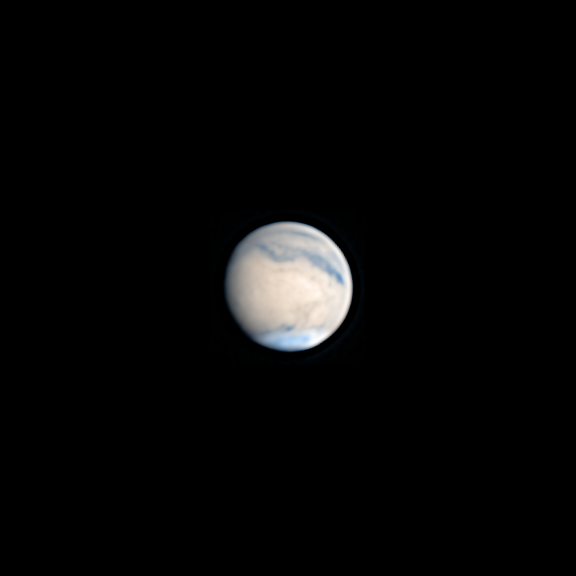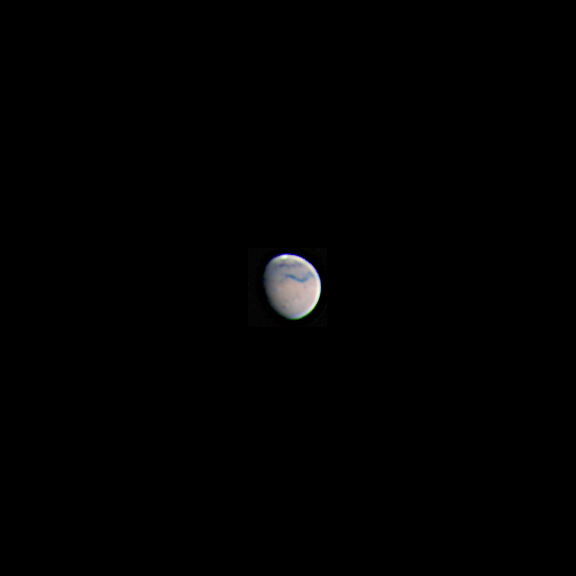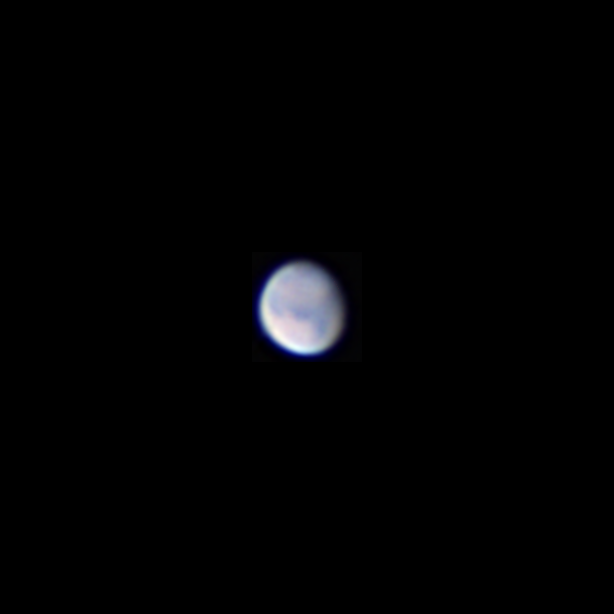Even though the occultation of Mars by the Moon was not visible in the Florida panhandle, we were close enough that it was a near miss. While this is not one of my normal occultation targets, I was able to come up with a combination of scope and camera to get both objects into one field of view. I was able to live stream about 12 minutes of the Moon closing on Mars before clouds ended any possibility of watching the rest of the event.
This is one frame of the streamed video. I was pleasantly surprised that surface detail was still visible on Mars with the camera gain set as low as it was to prevent overexposure of the Moon.




